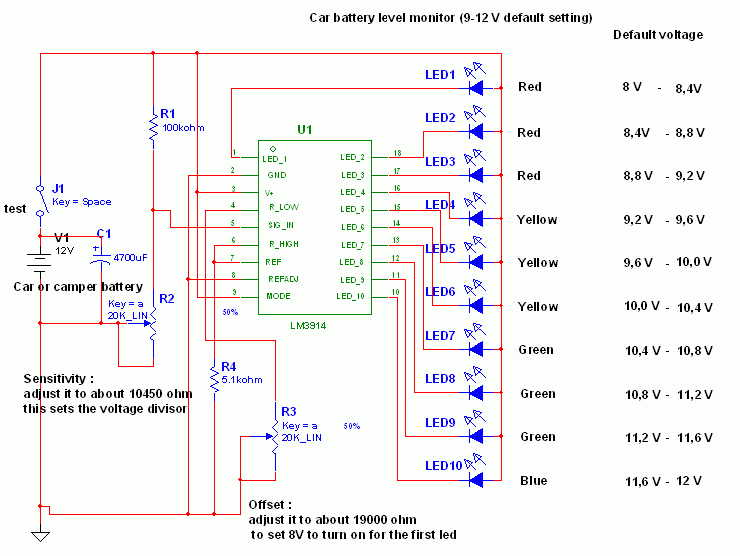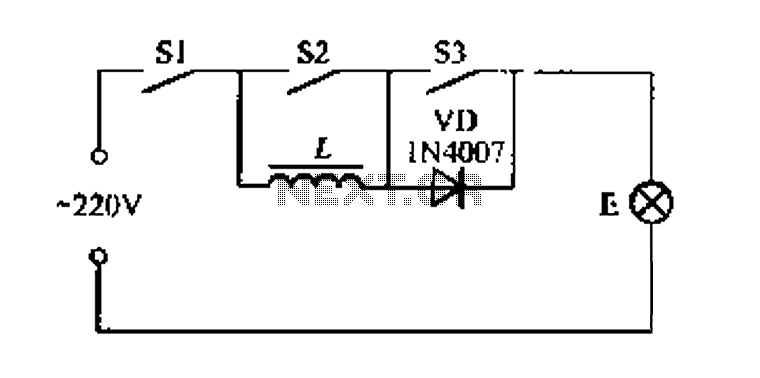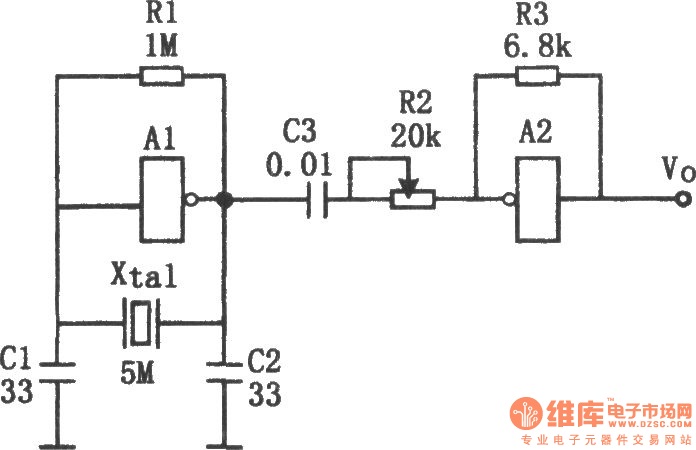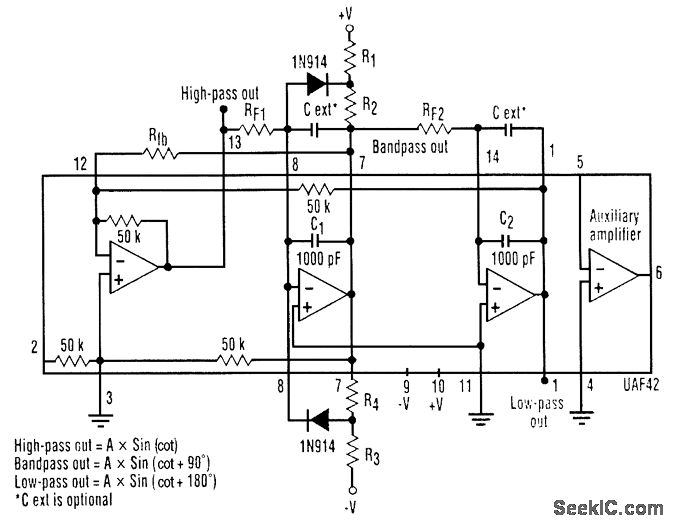
Generating a simple sine wave
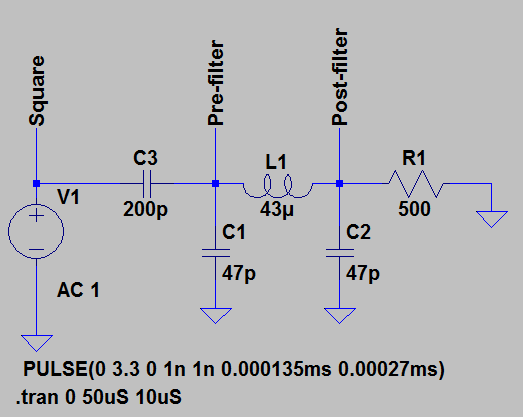
A sine wave carrier is required for a magnetic transponder system. Various crystal-based oscillators, such as the Pierce oscillator, can be complex to design and ensure proper functionality. An alternative approach involves using a square wave oscillator in conjunction with a filter to convert it into a sine wave. This filter attenuates all frequencies except for the fundamental frequency, significantly reducing the square wave components. Testing was conducted using LTspice, followed by a breadboard implementation to verify real-world performance. The filter employed is a simple LC low-pass filter, commonly referred to as a pi filter due to its configuration. LTspice simulations can effectively evaluate filter performance and generate FFTs for response visualization. The testing circuit consists of a pulsed voltage source to generate a square wave and the filter. A frequency of 3.6864 MHz was selected, as it conveniently divides into serial baud rates, making it suitable for serial communication. Simulation results display the waveforms, confirming the square wave and the resultant sine wave, which appears somewhat triangular. The FFT analysis indicates that the first harmonic is approximately -30 dB, while other harmonics are below -40 dB. Although the sine wave is not perfect in simulation, it appears acceptable for practical use, prompting the construction of a physical circuit for further testing. A breadboard circuit was assembled using an AEL crystal, Murata inductor, and standard ceramic capacitors. Data was captured from the post-filter node at 250 MSa/sec for 1 Meg of samples, utilizing the long memory option on a Rigol DS1052E oscilloscope. The resulting waveform, although slightly rough, displays an accurate frequency of 3.6864 MHz as indicated by the frequency counter. This signal was analyzed using Sigview, producing a basic FFT from the CSV data, which reveals a strong peak at 3.6864 MHz and harmonics below -60 dB. The performance exceeded initial expectations, with a cutoff frequency of approximately 5 MHz using standard components. SMD components offer a broader selection of values at similar costs, allowing for the design of a more precise filter on a PCB. Despite the sine wave being less pristine than a dedicated crystal or DDS-generated signal, it remains a cost-effective and simple solution for low-frequency digital transmission, with an estimated total cost of around £3 for single units, potentially lower in bulk.
The circuit for generating the sine wave carrier consists of a square wave oscillator followed by an LC low-pass filter configured as a pi filter. The oscillator can be implemented using a simple 555 timer circuit or a dedicated square wave oscillator IC. The output of the oscillator feeds into the LC filter, which is designed to have a cutoff frequency around 5 MHz to effectively attenuate higher harmonics while preserving the fundamental frequency at 3.6864 MHz.
The LC filter utilizes an inductor (L) and two capacitors (C1 and C2) arranged in a pi configuration. The values of these components can be calculated using the standard formula for the cutoff frequency of an LC low-pass filter:
\[ f_c = \frac{1}{2\pi \sqrt{LC}} \]
Where \( f_c \) is the cutoff frequency, \( L \) is the inductance in henries, and \( C \) is the capacitance in farads. Selecting appropriate values for L and C will ensure that the filter effectively suppresses unwanted harmonics while allowing the desired frequency to pass through.
In practical applications, the choice of components may vary based on availability and desired performance characteristics. The use of SMD components can enhance the compactness of the circuit and allow for more precise tuning. Additionally, a PCB layout can improve the overall performance by minimizing parasitic inductance and capacitance, which can affect the filter's response.
For testing and validation, an oscilloscope can be employed to observe the output waveform after the filter. The FFT analysis will confirm the harmonic content and ensure that the signal meets the requirements for the intended application. This process illustrates the effectiveness of using a square wave oscillator combined with a low-pass filter to generate a sine wave suitable for magnetic transponder systems and low-frequency digital communications.I needed a sine wave carrier for a magnetic transponder system I am working on. Various types of crystal based oscillator are available such as the Pierce, but these can be tricky to design and ensure they work correctly. Rich suggested using a square wave oscillator with a filter to turn it into a sine wave. The filter attenuates all frequencies except the fundamental frequency, which should remove much of the square wave. Over a couple of nights I tested this in ltspice then built it on a breadboard and checked the real life results. The filter used is a simple LC low pass, called a pi filter due to the shape. ltspice can easily be used to test a filter and produce an FFT to visualise the response. The circuit used for testing is shown below and uses nothing more than a pulsed voltage source (to generate a square wave) and the filter.
The value of 3. 6864Mhz was chosen as it is a commonly available oscillator that divides very nicely into serial baud rates, making it excellent for serial communication. Simulating a few cycles of this provides the waveforms shown below, which verify the square wave and the resulting "sine", which looks a little triangular at a first glance.
The FFT shows that the first harmonic is around -30dB, others are far below -40dB. The sine wave is not perfect in the simulation but looks quite reasonable, so it is time to build a real circuit to test. Whilst the simulator is perfect, real life is not. The circuit was built on a breadboard with an AEL crystal, Murata inductor and ordinary ceramic capacitors.
Using my Rigol DS1052E I captured data from the "post filter" node at 250Msa/sec for 1Meg worth of samples, using the "long memory" option. The graphic below shows the slightly rough sine wave, the frequency counter at the top right clearly shows an almost exact 3.
6864Mhz reading. This was fed into Sigview (a time limited demo is available that works well). A basic FFT was produced from the CSV data which clearly shows a strong peak at 3. 6864Mhz and all harmonics below -60dB. These results are excellent and exceeded what I expected from my initial tests. Which gives a cut-off of approximately 5Mhz using standard value components. SMD parts are often available in a wider selection of values for the same price so a more specific filter could be designed on a PCB. However this is still well below the 2nd harmonic frequency (7. 3728Mhz) so is a perfectly acceptable filter. Although this sine wave is nowhere near as clean as a proper crystal or DDS generated signal it is cheap, simple to construct and should work as a carrier for low frequency digital transmission to an acceptable degree.
The total cost is around £3 in single quantities and would be much cheaper at volume. 🔗 External reference
The circuit for generating the sine wave carrier consists of a square wave oscillator followed by an LC low-pass filter configured as a pi filter. The oscillator can be implemented using a simple 555 timer circuit or a dedicated square wave oscillator IC. The output of the oscillator feeds into the LC filter, which is designed to have a cutoff frequency around 5 MHz to effectively attenuate higher harmonics while preserving the fundamental frequency at 3.6864 MHz.
The LC filter utilizes an inductor (L) and two capacitors (C1 and C2) arranged in a pi configuration. The values of these components can be calculated using the standard formula for the cutoff frequency of an LC low-pass filter:
\[ f_c = \frac{1}{2\pi \sqrt{LC}} \]
Where \( f_c \) is the cutoff frequency, \( L \) is the inductance in henries, and \( C \) is the capacitance in farads. Selecting appropriate values for L and C will ensure that the filter effectively suppresses unwanted harmonics while allowing the desired frequency to pass through.
In practical applications, the choice of components may vary based on availability and desired performance characteristics. The use of SMD components can enhance the compactness of the circuit and allow for more precise tuning. Additionally, a PCB layout can improve the overall performance by minimizing parasitic inductance and capacitance, which can affect the filter's response.
For testing and validation, an oscilloscope can be employed to observe the output waveform after the filter. The FFT analysis will confirm the harmonic content and ensure that the signal meets the requirements for the intended application. This process illustrates the effectiveness of using a square wave oscillator combined with a low-pass filter to generate a sine wave suitable for magnetic transponder systems and low-frequency digital communications.I needed a sine wave carrier for a magnetic transponder system I am working on. Various types of crystal based oscillator are available such as the Pierce, but these can be tricky to design and ensure they work correctly. Rich suggested using a square wave oscillator with a filter to turn it into a sine wave. The filter attenuates all frequencies except the fundamental frequency, which should remove much of the square wave. Over a couple of nights I tested this in ltspice then built it on a breadboard and checked the real life results. The filter used is a simple LC low pass, called a pi filter due to the shape. ltspice can easily be used to test a filter and produce an FFT to visualise the response. The circuit used for testing is shown below and uses nothing more than a pulsed voltage source (to generate a square wave) and the filter.
The value of 3. 6864Mhz was chosen as it is a commonly available oscillator that divides very nicely into serial baud rates, making it excellent for serial communication. Simulating a few cycles of this provides the waveforms shown below, which verify the square wave and the resulting "sine", which looks a little triangular at a first glance.
The FFT shows that the first harmonic is around -30dB, others are far below -40dB. The sine wave is not perfect in the simulation but looks quite reasonable, so it is time to build a real circuit to test. Whilst the simulator is perfect, real life is not. The circuit was built on a breadboard with an AEL crystal, Murata inductor and ordinary ceramic capacitors.
Using my Rigol DS1052E I captured data from the "post filter" node at 250Msa/sec for 1Meg worth of samples, using the "long memory" option. The graphic below shows the slightly rough sine wave, the frequency counter at the top right clearly shows an almost exact 3.
6864Mhz reading. This was fed into Sigview (a time limited demo is available that works well). A basic FFT was produced from the CSV data which clearly shows a strong peak at 3. 6864Mhz and all harmonics below -60dB. These results are excellent and exceeded what I expected from my initial tests. Which gives a cut-off of approximately 5Mhz using standard value components. SMD parts are often available in a wider selection of values for the same price so a more specific filter could be designed on a PCB. However this is still well below the 2nd harmonic frequency (7. 3728Mhz) so is a perfectly acceptable filter. Although this sine wave is nowhere near as clean as a proper crystal or DDS generated signal it is cheap, simple to construct and should work as a carrier for low frequency digital transmission to an acceptable degree.
The total cost is around £3 in single quantities and would be much cheaper at volume. 🔗 External reference
